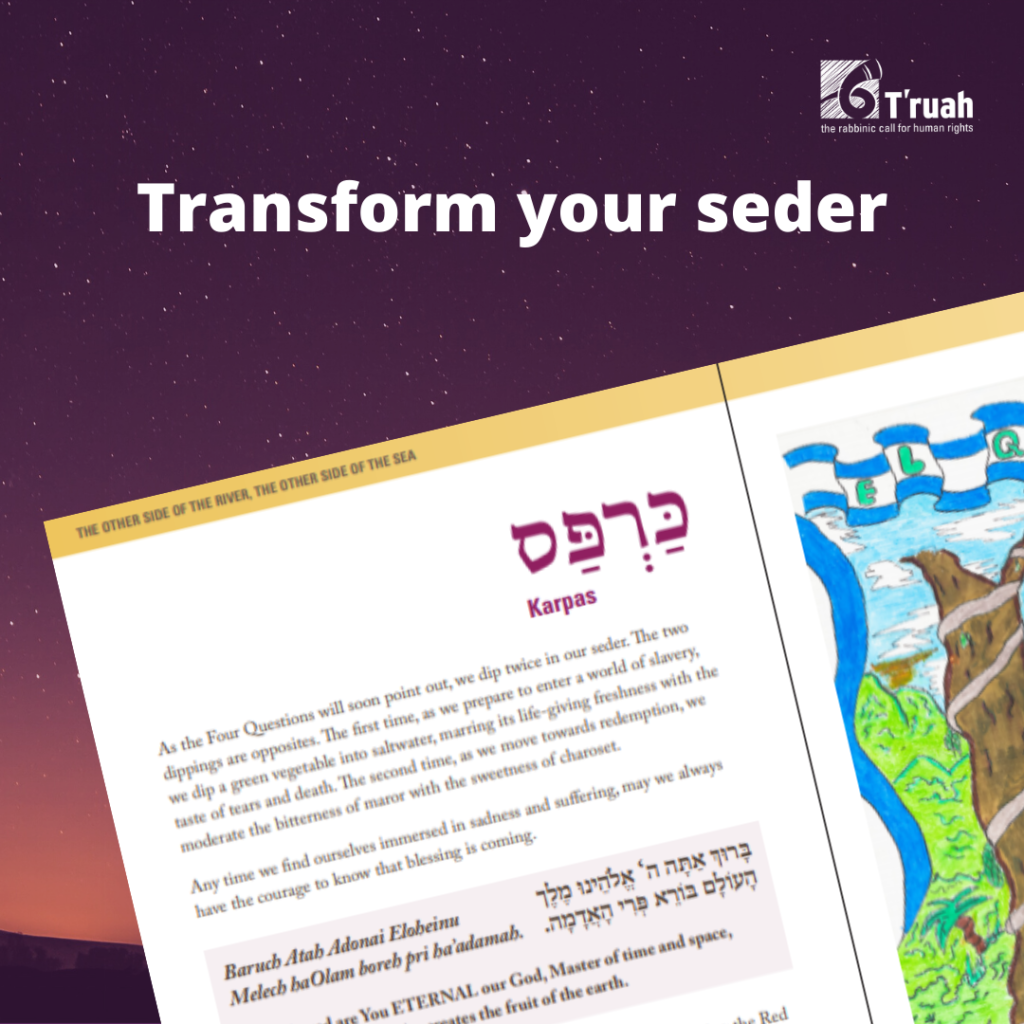
Complete PDF to print at home.
To print at home, make sure your printer is set up to print double-sided pages, and that they flip on the short side, not the long side. Fold the papers in half when they have finished printing, and use staples along the fold line to keep the pages together. The Haggadah is designed to be read right to left.
If your printer does not print double-sided, you can use this version.
The pages in this file are reversed (2 then 1, 4 then 3), so set your printer to landscape and to print two pages of content per piece of paper.
Section-by-section downloads:
p. 1-6 Introductory material, including the potential pitfalls of the phrase “modern slavery” and suggestions for how to use this haggadah to focus on different themes.
p. 7-10 Kadesh, Urchatz, and Karpas: Beginning the seder journey, including new meanings for dipping karpas in salt water.
p. 11-12 Yachatz: Beginning our immersion into the brokenness of the world.
p. 13-16 Ha Lachma Anya, the Four Questions, and Avadim Hayinu: Exploring the thesis statement of the haggadah. Who are we tonight and why are we at this seder?
p. 17-26 The seder’s first story arc–from idol-worship to monotheism–leads us to a deep dive into America’s history of slavery, racism, and exploiting foreign workers. Also includes the four children.
p. 27-36 The haggadah’s second story arc–“Arami Oved Avi” and our slavery in Egypt–leads us into an exploration of diversity among the Jewish people, immigration histories, and what constitutes forced labor.
p. 37-40 The ten plagues and Dayeinu, plus women’s resistance.
p. 41-46 Rabban Gamliel asks why this tomato is on our seder plate; the crux of the haggadah (“In every generation…”); and ending Maggid with a bit of song, plus Rachtzah.
p. 47-50 Motzi Matzah and Maror: Stories of immigration and forced labor.
p. 51-54 Korekh: Listening to stories of survivors as we combine bitter and sweet.
p. 55-58 Tzafun: The Afikoman can be the organizing principle for the second half of the seder–it’s not just for kids! Plus Shulchan Orekh and Barech.
p. 59-62 Opening the door for Elijah and Miriam: How is this door-opening different from all other door-openings?
p. 63-66 Hallel: Songs that sustain activists
p. 67-70 Nirtzah: Reaching for redemption and repentance
p. 71-74 A very short primer on human trafficking and action steps you can take to prevent it.
